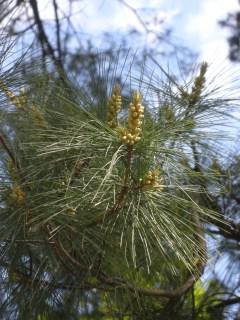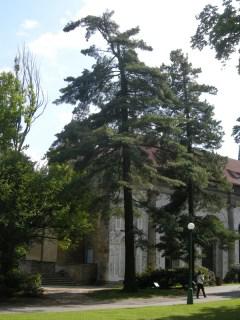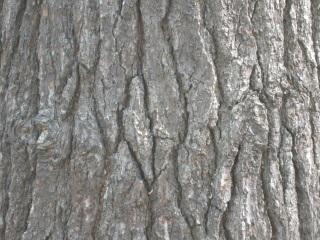
Pinus strobus Flower (17/05/2012, Prague, Czech Republic)
Position: Full sun to partial shade
Flowering period: Late spring
Soil: Moist, well drained
Eventual Height:40m
Eventual Spread:20m
Hardiness: 3a – 9a
Family: Pinaceae
Pinus strobus is a large, long lived, fast growing evergreen tree with a strait trunk and pyramidal when young. Its green/ blue leaves are in the form of needles in bundles of 5, are finely serrated, up to 13cm long. These persist on the tree for 18 months. Its branches. Its trunk may achieve a diameter of up to 1.5m. Its bark is thin and smooth on young trees, becoming red/ brown with fine scales with age. Its monoecious flowers appear at the branch tip, the male being yellow and the female being light green with a hint of red. Its cones are up to 16m long, 5cm broad and pendant.

Pinus strobus (17/05/2012, Prague, Czech Republic)
Pinus strobus, commonly known as Weymouth Pine, Eastern White Pine or the Tree of Peace, is native to eastern North America. Mature tree can easily be 250 years old, two tree in the USA are dated at nearly 500 years old. In its native habitat it grows in cool humid climates and grow in rocky highlands to boggy areas. It is aa dominat species and grows in mixed forests. This tree is now naturalising in Poland and the Czech Republic. This tree is used as a Christmas tree. It was introduced into Europe in 1705.
The etymological root of the binomial name Pinus is the old classical name for ‘Pine tree’. Strobus is derived from the Greek strobos meaning ‘whorling round’, possibly referring to the arrangement of the seed on the cone.
The landscape architect may find Pinus strobus useful as a large parkland tree. They may be used successfully in stabilising strip-mine spoil heaps, as they tolerate acidic soils.

Pinus strobus Bark (17/05/2012, Prague, Czech Republic)
Ecologically, P. strobus provides food and shelter for birds and mammals.
P. strobus prefers moist, fertile, well-drained soils. It tolerates acidic to neutral pH of soil, although it prefers acidic soils. It will tolerate nutrient deficient soils.
Pinus strobus requires little maintenance.

